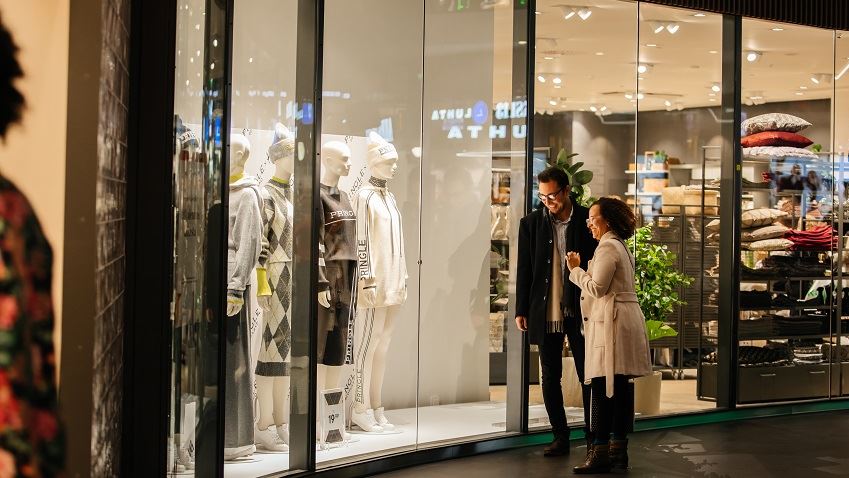Finding the right direction for business development by co-creating with stakeholders
- Retail
- Retail Industry Insights
- 3/16/2017
Shopping mall, how’s it going?
The retail industry is changing, digitalization is on the rise – what will to happen to shopping centres and malls? We took a look at the current state and future of the Finnish mall business.

Already at the end of 2016 economists declared the recession to be over. Delightfully, the positive financial buzz has now managed to infiltrate the retail trade, too. Although wage-earners’ purchasing power did not significantly increase last year compared to the year before, retail has indeed increased. Compared to 2015, retail sales increased during all quarters of 2016 except the first. During the second quarter of the year, sales increased 1.3 per cent; from July to September sales increased 1.2 per cent; and from October to December sales increased 0.8 per cent.
Growth was particularly promising among the mall-specific sectors as sales increased in both grocery and department stores. During the year, department store sales increased 1.8 per cent compared to previous year, and grocery store sales increased 0.3 per cent. Specialty stores, too, demonstrated positive development compared to the situation one year earlier. The sales forecast published by the Finnish Commerce Federation implies that the change is due not only to the improved economic situation but the deregulation of opening hours in Finland, too.
The basis of the mall business remains firm
The Finnish Council of Shopping Centers reports that the total sales of Finnish malls amounted to around 5.9 billion euro in 2015. The number of visitors increased, too, reaching 374 million annually. One new mall was opened, upping the number of Finnish malls to nearly a hundred – we now have 97 malls in Finland. In 2016, the figures kept improving: the number of mall visitors increased 5.1 per cent and total sales 3.2 per cent compared to the previous year. Especially the malls of the Helsinki metropolitan region did well compared to the rest of Finland; sales increased 3.3 per cent in the south while growth in other parts of Finland was 2.8 per cent. Appropriately, in all of the Nordic countries, shopping centres are the most popular places to shop.
What kind of mall visitors are Finns and what do they do while visiting a shopping centre? Spend time, meet each other and, of course, consume – although relatively moderately. In 2014, a Finn spent 24 € on average during their visit to a mall. This is not a huge sum by international comparison. For example in the UK, the amount ranges from 48 to 150 pounds per visitor.
Finns visit malls relatively often. Nearly half of 25 to 65-year-olds consumers visit malls at least once a week. The most active visitors are those living alone. The visits are often quick: of 55 to 65-year-olds more than 70% spend less than one hour in the mall. Younger ager groups hang around longer: more than half of 16 to 25-year-olds stay longer than one hour. The most important criterion in selecting which mall to visit is location.
Innovation drives malls forward
Despite favourable winds, the changing retail market can be a challenge to the shopping centres, too. According to the latest survey barometer by the Finnish Council of Shopping Centers, the professionals of the trade have a strong belief in the future of the business. Two out of three respondents estimated the number of visitors and sales to increase in the future, particularly compared to other retail trade development. However, professionals suspect the tightening competition and changing market to also change the conditions: up to 90 per cent believe that the sales differences between malls and retail stores will increase.
The development of urban structures and consumer behaviour will particularly impact the future of malls. The consumers who have grown up among online shops in a global internet society are more demanding than ever. That is why the primary challenge is to attract the consumers to stay in, enjoy and spend money in malls. The key to success is continuous development of the facilities, offering and activity. The shopping centre barometer states that the largest malls in the metropolitan area are the ones to succeed – about half of the respondents estimated the occupancy rates of metropolitan malls to increase during the next three years.
In 2015 up to 29% of retail trade took place on the internet. This is a large number compared to all other trade occurring online. Wholesale was the only industry where internet sales were higher (33%), and retail even beat travel services (28%) that very often operate online.
Digitalization and online trade are both a challenge and an opportunity for the malls. According to the Retail in Finland report, most of the trade takes place near people’s everyday lives despite new distribution channels. Physical stores have not lost their appeal. The future retail winner will be a mall that combines online methods and physical spaces into a complete experience including modern design and construction solutions.



